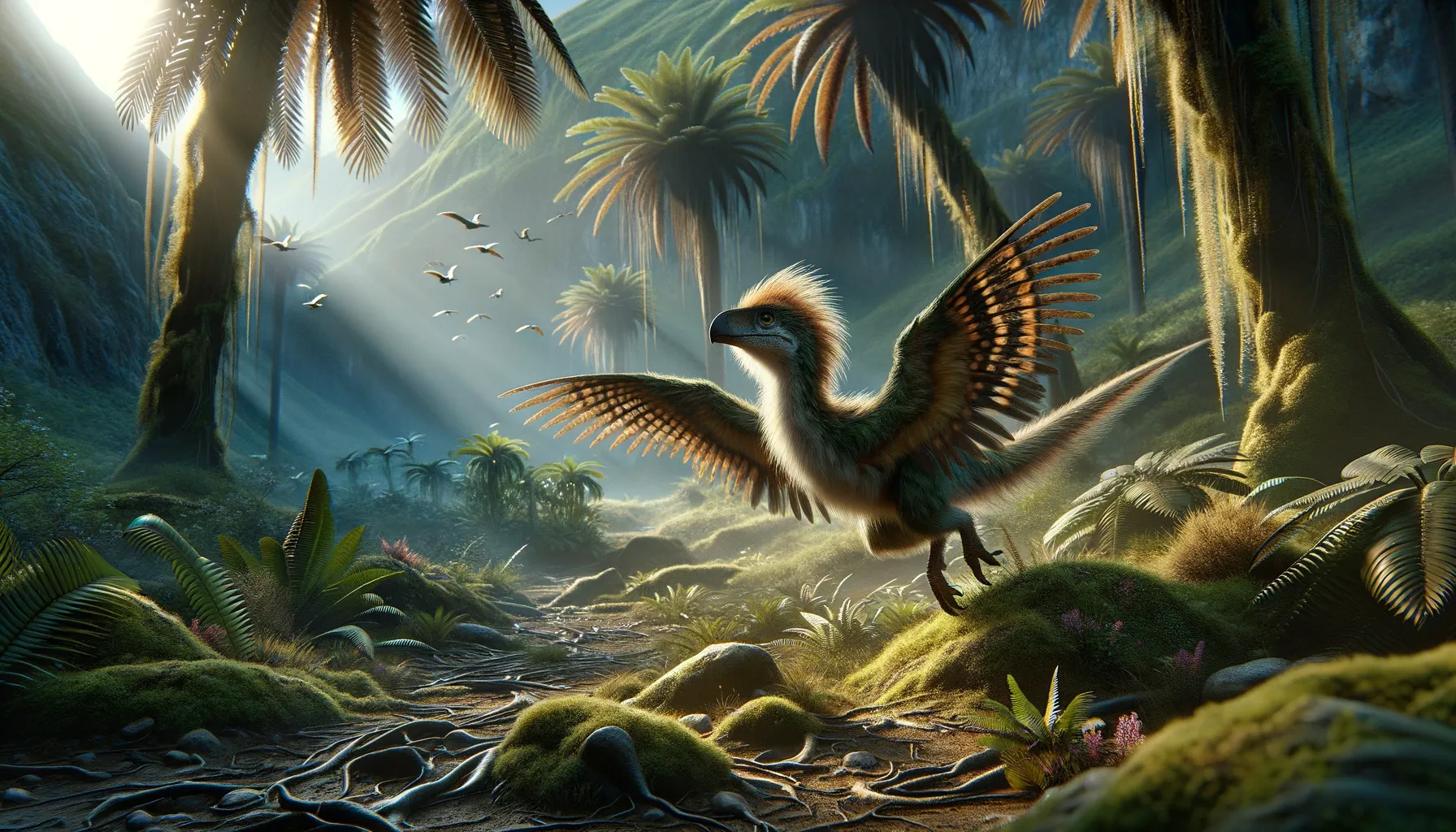
Jixiangornis
Where dinosaur meets bird in flight.
Period
Cretaceous
Length
About 55 centimeters long.
Height
Roughly 30 centimeters tall.
Weight
Approximately 1 kilogram.
Jixiangornis was a small, bird-like dinosaur from the Early Cretaceous period. Known for its unique blend of avian and dinosaur features, it had feathers and was capable of flight, resembling modern birds in several aspects. Its discovery provided important insights into the evolution of flight and the transition from dinosaurs to birds. Fossils of Jixiangornis helped paleontologists understand more about the diversity and complexity of prehistoric life forms.
Diet
Jixiangornis likely fed on a mix of seeds, insects, and small vertebrates. Its diet would have been similar to that of modern birds living in forested environments, utilizing its beak to forage and pick food from various surfaces.
Hunting
As an opportunistic feeder, Jixiangornis might have employed stealth and quick movements to catch insects. It may have used its flight abilities to maneuver through the air, hunting down prey with precision.
Environmental challenges
Living in the Early Cretaceous period, Jixiangornis faced challenges from larger predators and competition for resources. The changing climate and shifting landmasses of that era also posed challenges, requiring adaptability. The ability to fly might have given it an advantage in escaping some threats and finding new habitats.
Speed
Moderate flyer, likely agile in the air.
Lifespan
Estimated to be around 10 to 15 years.
First discovery
Discovered in China, described in 2002.
Fun Facts
- Jixiangornis is considered one of the earliest known birds, living around 120 million years ago during the Early Cretaceous period.
- Unlike modern birds, Jixiangornis had teeth, which it used to catch and eat its prey.
- Jixiangornis had long arms and claws, suggesting it was well-adapted for climbing trees and possibly gliding or flying short distances.
- This prehistoric bird had a long tail with feathers, which might have helped it balance while in the air or on land.
- Jixiangornis fossils have been found in what is now China, giving us insights into early bird evolution in that region.
- The name 'Jixiangornis' means 'auspicious bird' in Chinese, highlighting its scientific importance.
- Jixiangornis provides a fascinating link between feathered dinosaurs and modern birds, showcasing the evolutionary journey over millions of years.
Growth and Development
Jixiangornis, like many small theropods, likely grew rapidly to reach maturity. This rapid growth would have been essential for survival in a world filled with predators. Its development from hatchling to adult might have involved changes in feather structure and coloration, aiding in camouflage.
Habitat
Jixiangornis lived in what is now northeastern China, which during the Cretaceous period was a region of lush forests and lakes. These environments provided ample opportunities for finding food and nesting sites. The presence of water bodies would have supported a rich ecosystem teeming with life, from which Jixiangornis could thrive.
Interaction with other species
Jixiangornis likely competed with other small theropods and early birds for food and nesting areas. Its interactions with other species might have included avoidance of larger predators, such as carnivorous dinosaurs, and possibly symbiotic relationships with animals that did not threaten it.
Natural lifespan
Jixiangornis probably lived naturally for about 10 to 15 years.
Reproduction
Jixiangornis likely laid eggs, similar to modern birds, potentially in nests built in trees or on the ground. Its reproductive strategy might have involved caring for its young until they were capable of flight. Social behaviors during nesting could have included mating displays and territorial defense.
Social behaviour
Jixiangornis might have lived in small flocks or pairs, engaging in cooperative behaviors. Social structures may have included hierarchies or partnerships, especially during breeding seasons. Communication likely involved vocalizations and visual signals, crucial for mating and reinforcing social bonds.
Fossil locations
Fossils of Jixiangornis have been found in the Yixian Formation of Liaoning Province, northeastern China. These regions are renowned for their well-preserved fossils from the Early Cretaceous period. The fossil sites have provided valuable insights into the diversity and complexity of life during that era.
